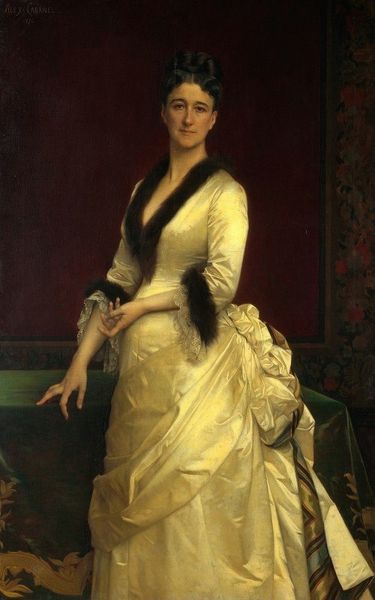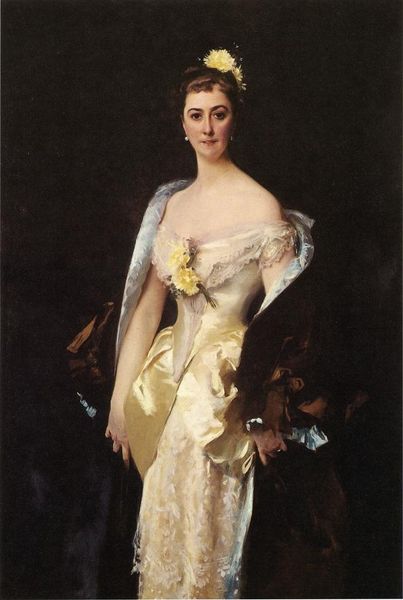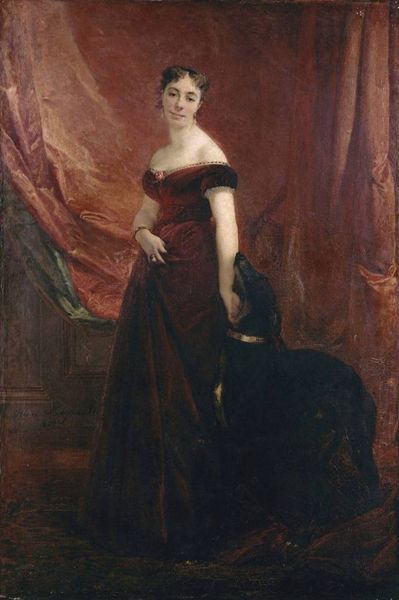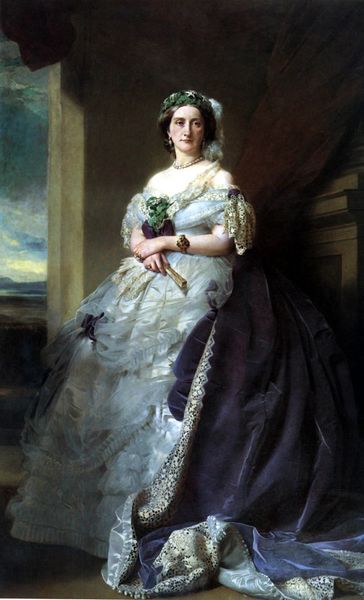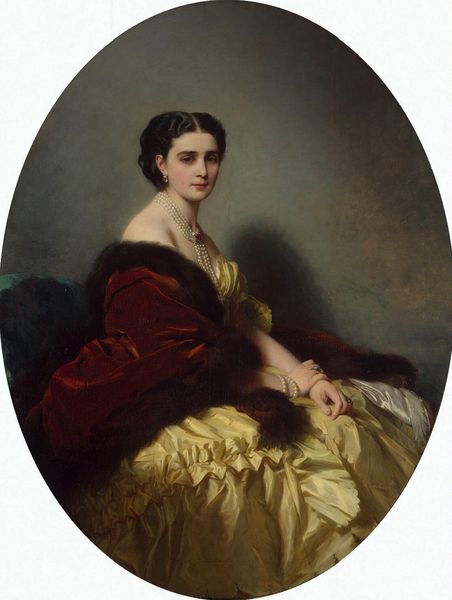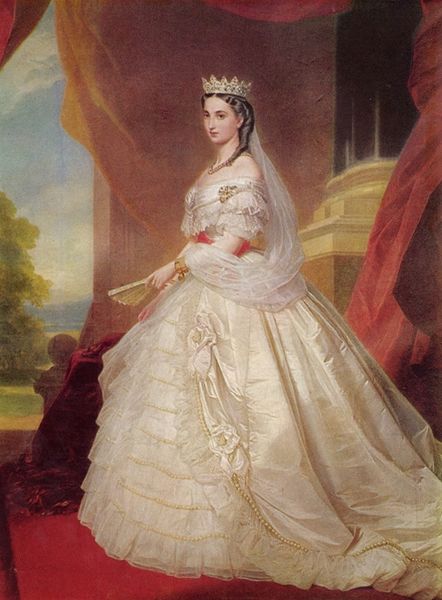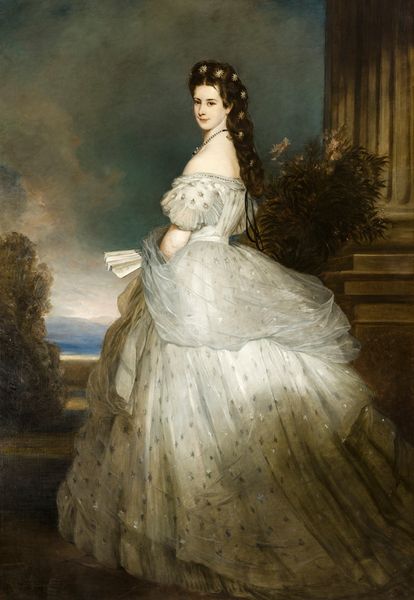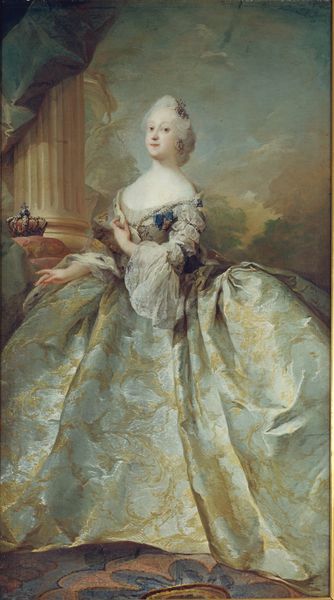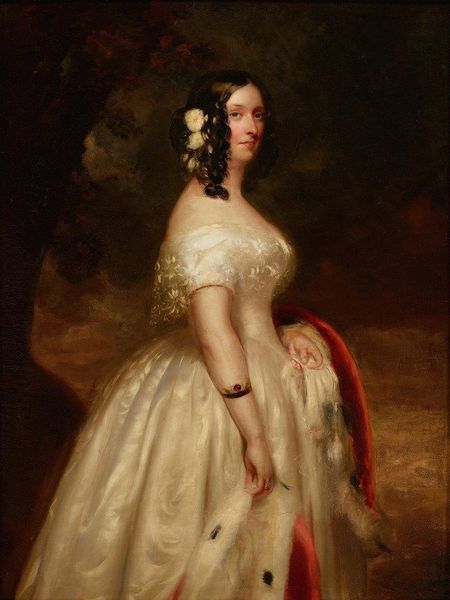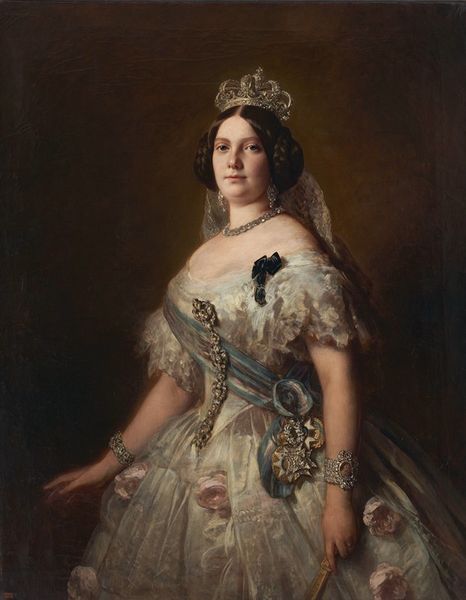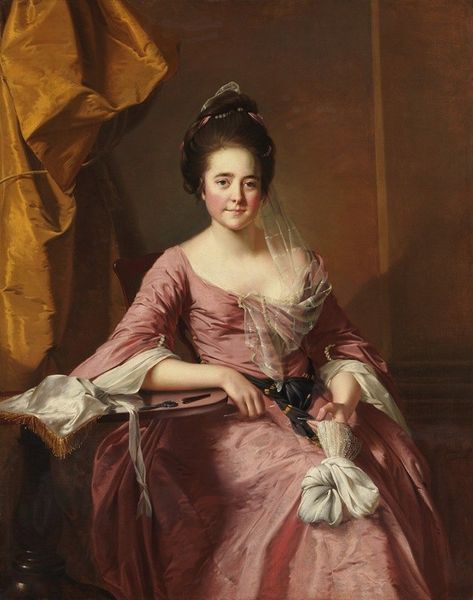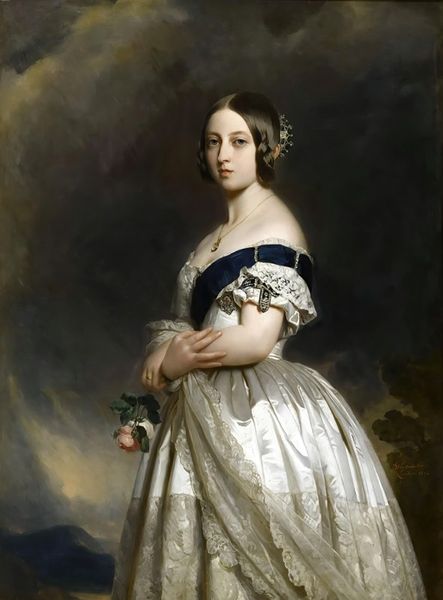
painting, oil-paint
#
portrait
#
painting
#
oil-paint
#
figuration
#
romanticism
#
costume
#
history-painting
#
academic-art
#
dress
#
realism
Copyright: Public domain
Curator: This is Franz Xaver Winterhalter's "Portrait of Victoria of the United Kingdom," painted in 1845. The medium is oil on canvas. Editor: The creamy hues create such a dreamy atmosphere! The off-white dress especially feels voluminous and light. Curator: Absolutely, and that gown is quite revealing. In 1845, Victoria was not just a queen but a young wife and mother. Royal portraits were crucial in shaping public image. Winterhalter skillfully blended her regal status with relatable femininity, softening the monarchical image in response to popular demand. The social climate of the Victorian era greatly influenced the way she was depicted. Editor: Considering his style, and if we look closer at how Winterhalter builds the fabric with visible brushstrokes and a clear layering of light and shadow, one can’t overlook the intense labor involved in replicating such luxury! The dress—the detail is captivating, implying its delicate fabrication from possibly multiple kinds of fabric with costly embellishments. Each layer represents specialized skill and labor! Curator: The contrast is stark! Royal portraiture had become industrialized in a way, processed by skilled professionals creating carefully managed versions of power that could circulate widely. Winterhalter created many such images of European royalty, efficiently produced, maintaining this romanticism as a marketable commodity. Editor: Do you believe Winterhalter ever critically examines those power dynamics within his material practice, or do you think his approach is purely celebratory? I am curious to know whether his involvement went beyond skill demonstration. Curator: The political aspect is very important! Look at the context—Europe, emerging industrial power—Victoria's reign meant global projection and empire, things beyond pure aesthetics and materiality. Winterhalter knew his patron! It's a painting about imperial power mediated by industrial innovation, aimed at fostering political belief in her divine right to rule. Editor: Well, looking closer at its manufacture certainly raises questions about power structures and what it meant to produce images that uphold them. Thank you! Curator: Thank you! It's always fascinating to re-examine iconic figures, thinking about their creation and enduring political weight.
Comments
No comments
Be the first to comment and join the conversation on the ultimate creative platform.
